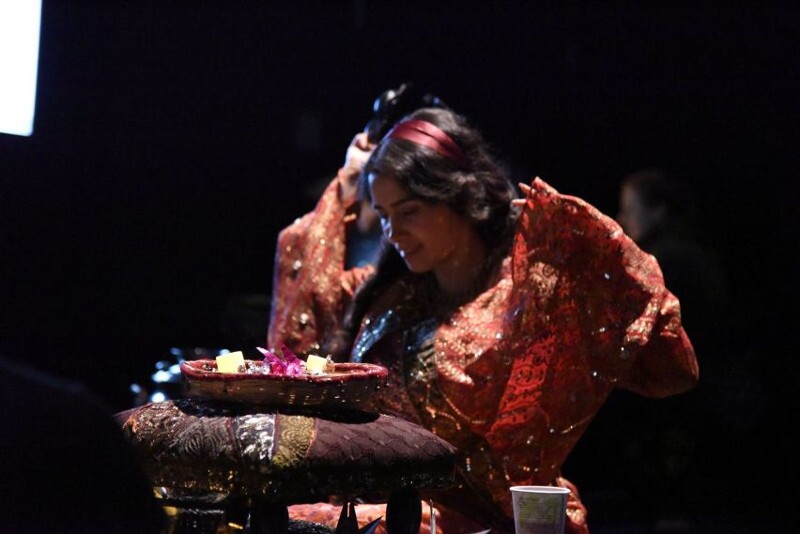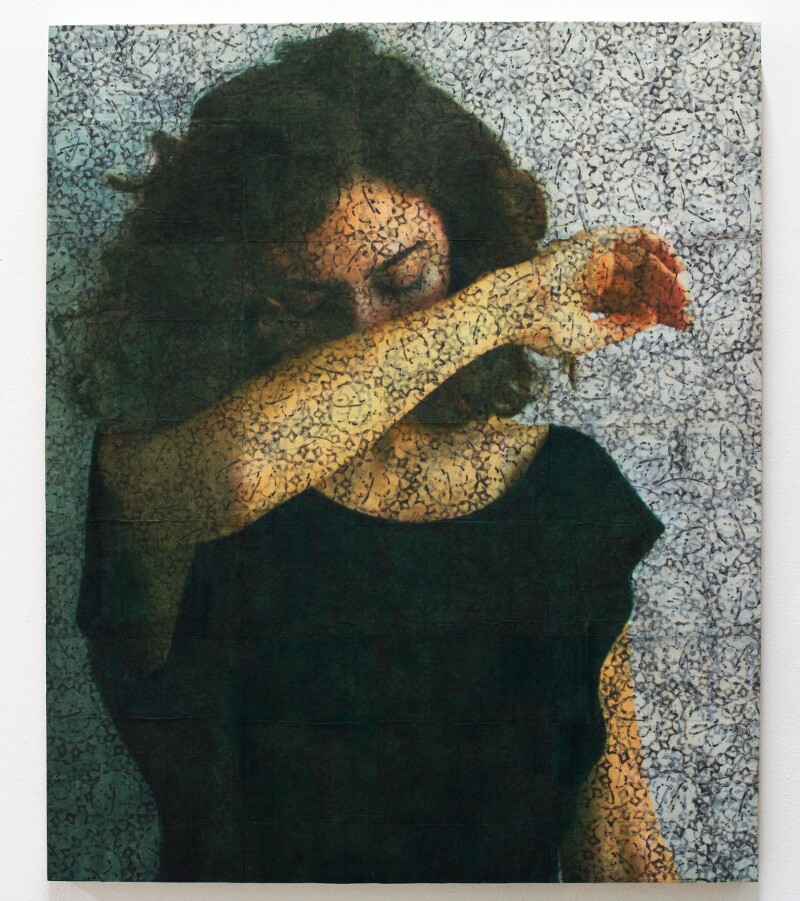The Damaging Effects of Trump's Travel Ban on Arts and Culture

When Los Angeles-based artist Marjan K. Vayghan traveled to Los Angeles International Airport (LAX) on the afternoon of Friday, January 27 to pick up her uncle, she was not prepared for the harrowing ordeal she and her family would face as a consequence of President Trump’s most recent executive order, signed just a few hours before. Her uncle, Ali Vayeghan, was visiting from Iran and was due to land at LAX at 7:15 p.m. He would be staying briefly with Vayghan and her family and be joined in a few days by his wife and his son; he had not seen his son for several years. However, just a few hours earlier, at 4:42 p.m. Eastern time, the executive order suspended all refugee admissions for 120 days and blocked citizens of seven Muslim-majority countries (Iran, Iraq, Libya, Somalia, Sudan, Syria and Yemen) from entering the United States for 90 days. Her uncle, who holds a U.S. Green Card and had boarded the plane from Iran before the order was signed, was now no longer permitted to land in the United States. Vayghan and her family waited for hours with no information about his whereabouts. Eventually, around 2 a.m., they were informed that her uncle was awaiting deportation to Iran. Frantic conversations with lawyers followed and hundreds of supporters gathered at LAX to protest the order. Although the mandate was soon partially frozen by a federal judge, it was too late for her uncle. He had already been sent back to Iran. On February 1, Vayghan announced via Facebook that with the aid of the ACLU, her uncle was granted re-entry to the U.S. and was scheduled to arrive in Los Angeles on February 2. She expressed joy at reuniting with her uncle but the emotional hurdles she and others in similar situations have endured by this matter continue.
Vayghan, a conceptual artist, writer, curator and fashion designer of Azerbaijani-Iranian background, moved to the U.S. with her family in 1995. For several years she traveled back to Tehran regularly and began working on creative projects, bringing together Iranian and American artists, until one visit in 2009 when she and her partner were seized in Tehran by government officials and interrogated for hours. Although she was deeply traumatized by the experience and has been unable to return to Iran, it made her even more committed to connecting the creative communities of her two countries, and she went on to co-found and direct Building Bridges, an organization that connects performing and visual artists from different cultures. Since the 2016 presidential election, she has become more determined than ever to keep creating. “I’m gonna make as much art as I can,” she says, “and exercise my freedom to write, curate, create and be an activist as much as possible. It’s harder under the thumb of demagogues, yet in my experience, it brings people together.”

The concept of bringing the people and ideas of different cultures together lies at the core of many of the world’s arts and cultural organizations. Already in the few days since this executive order, museum directors around the United States have been expressing concern about the impact the travel ban will have on their work. In an article in the New York Times on January 29, Thomas P. Campbell, the director of the Metropolitan Museum of Art, explained that the ban will impact scholarly exchanges and international collaborations that are an important part of the museum’s work, “at a time when the world needs more, not less, exchange and mutual understanding.”
In the arts and culture realm in Southern California, the impact of the travel ban is already being strongly felt, in part because more than half a million Iranians and Iranian Americans live in the region, and there are many cultural connections between Los Angeles and Iran in particular. In the film industry, the effect is most immediately apparent. One of this year’s Oscar nominees for best foreign-language film is the Iranian film “The Salesman,” which tells the tale of a couple in Tehran who are starring in an amateur production of Arthur Miller’s “Death of a Salesman” — a creative union of American and Iranian culture. Because of the travel ban, the director Asghar Farhadi will be unable to attend the Academy Awards Ceremony in Los Angeles on February 26.

The region’s museums and galleries are also bracing for impact. The Los Angeles County Museum of Art (LACMA) is the American museum that is most actively collecting contemporary art of the Middle East, and it currently possesses the nation’s largest public collection. According to Dr. Linda Komaroff, curator of Islamic art and department head of Art of the Middle East at LACMA, the ban could affect some of the museum’s plans for an exhibition of Iranian art currently planned for 2018. The exhibition, “In the Fields of Empty Days: The Intersection of Past and Present in Iranian Art” will be a large international loan exhibition including both historical and contemporary Iranian artworks, some of which will be borrowed from collections in Iran. Komaroff is concerned that if the travel ban is continued, some of the artists who would be traveling with their art to Los Angeles will no longer be able to enter the country.
Already, Komaroff has had to cancel a research trip to Iran this April because Iran has now imposed a reciprocal travel ban on U.S. nationals. “The main impact,” she explains, “could be the end of the successful exchange that has been going on for several years now between the museum and artists from Iran.” For example, the museum organized a program in October 2016 with Ali Akbar Sadeghi, a noted painter, book illustrator, animator, and sculptor. “It was really a wonderful introduction to this artist and his important work.”
Private galleries and art spaces generally have a shorter lead time than museums so they are facing more immediate challenges as they prepare to open exhibitions over the next few months possibly without the presence of their featured artists. Venues specializing in the works of Middle Eastern artists, in particular, are concerned about the negative effect that the travel ban will have on their ability to fulfill their mission of improving intercultural relations between the United States and countries in the Middle East. “Isolation is never conducive to overcoming prejudices and differences in ideologies,” says Roshi Rahnama, founder and principal of Advocartsy, a collaborative visual arts platform that spotlights the work of contemporary Iranian artists in Southern California.

Rahnama, a former attorney who grew up in Tehran and immigrated to California with her family in 1979, founded Advocartsy in 2015. She opened The Space on San Pedro Street in downtown Los Angeles as a venue for showcasing the work of Iranian artists “in order to help bring both wider and more focused attention to the Iranian contemporary art community within the vibrant Los Angeles art scene,” she says. Her next show “Art Brief III: The (Un)draped Woman” will open on February 9 at Arena 1 Gallery in Santa Monica and will encourage viewers to “go beyond pre-conceived perceptions and help engender a new dialogue regarding the image of women in Iran and beyond.” Most of the artists featured are based in the U.S. but a few live in Iran and/or are permanent residents and visiting Iran at this time. The impact of the travel ban is presently unknown to these artists but the concern remains. Certainly, every country has a duty to maintain the safety of its grounds, Rahnama says, “but the effectiveness and nature of the approach also matters.” She adds: “The approach taken with this executive order will have a chilling effect on free access to sources of art and thus hinder our ability to build bridges between our cultures.”
As President Trump’s new administration gears up to begin its various construction projects, it has been made clear that the building of walls and separating cultures is a greater priority than the construction of bridges to connect them. By restricting exchange between the U.S. and the seven Muslim-majority countries singled out in the executive order, our nation is not only preventing individuals like Vayeghan to visit his family in Southern California. It is also burning the bridges that allow artistry, creativity and the exchange of ideas to flow freely back and forth between communities. It is not clear how long the travel ban will remain in place, but as each day passes, artists, arts advocates, curators, filmmakers, musicians and writers in California and other parts of the country might do well by spreading the words of the 13th century Persian poet, scholar and Sufi mystic, Rumi, who wrote, “Love is the bridge between you and everything.”





